First things first – is your organization already reporting on its sustainability practices? More and more companies are engaging in sustainability reporting, as this study from KPMG demonstrates, for all kinds of reasons. For some it’s now legally mandatory. In Belgium, for example, large enterprises employing more than 500 people are now legally obliged to report on their social and environmental impact. This is in line with EU Directive 2014/95/EU, which stipulates that large companies in member states must now disclose information on their sustainability and diversity practices, effective for financial years beginning on or after January 1, 2017.
The EU rules on non-financial reporting only apply to large public-interest companies with more than 500 employees. This covers approximately 6,000 large companies and groups across the EU, including listed companies, banks, insurance companies, and other companies designated by national authorities as public-interest entities.
As an SME, should you report on sustainability?
What about small, or medium-sized companies? For now, there is no legal requirement for SMEs to disclose this information. Still, lots of them are doing it. Why? Because the world is changing, and so are the expectations of today’s business partners. As customers and investors become accustomed to reviewing the sustainability practices of large companies when making decisions, they’ll increasingly expect to know about the sustainability efforts of their smaller business partners, too.
The reason that the EU directive isn’t being applied to SMEs – for now – is the belief that having to do this kind of reporting places a disproportionate burden on smaller companies. But is that true? It is the case that at smaller companies, high-level execs are more likely to spend most of their time on sales, rather than financial reporting, and they might not have the bandwidth to add to their reporting resources. Small companies’ markets are usually smaller – focused on a niche, a region or a country, for example, rather than the entire world. And in terms of ‘impact,’ it can be hard for a small organization to see how its activities can make much of a difference to global issues like poverty, or human rights. For many SMEs, it can seem like there’s not much to actually report on.
The truth is, sustainability reporting for small and medium sized companies can be very powerful. First of all, through the analytical process of reporting, businesses gain insight into their own performance, and can identify ways to improve. And second, even if you’re a smaller company, it makes good business sense to offer greater transparency and highlight your sustainability practices. Your audiences want to know about your approach to sustainability, no matter what size of company you are. In fact, many organizations require proof of sustainability before they’ll partner with you. And third – effective sustainability reporting can actually increase your company’s valuation.
» We're organizing a free infusinar: “Why include sustainability in your B2B marketing story?” on Tuesday 16 October.
How can SMEs join the sustainability discussion?
So what’s the best way for a small or medium sized company to join the sustainability discussion, and effectively present your sustainability practices?
To start, make a list of the sustainability aspects that are relevant for your organization. Or, even better, ask your stakeholders to make the list together with you. For some companies, water consumption is more critical than carbon emissions, for example. Then highlight the responsible activities your company is engaged in, relative to these aspects.
Some examples: Has your company taken steps to ensure fair practices for everyone involved in producing your product, all the way along the value chain? Are your products made using recycled materials? Or what about your offices or manufacturing sites? Does your facility practice water conservation? Have you switched over to LED lighting? Have you embraced new business models, such as leasing instead of sales for example for lighting systems, roofing systems or any other type of ‘product’? Or are you reducing your CO2 footprint by promoting car sharing, company bikes, etc.?
There are many ways to do business in a sustainable way. At Living Stone, we can help you build your sustainability marketing story and put it into practice so that it reaches your stakeholders.
Contact us for more information.
Free info session about sustainability in B2B
Living Stone is bringing together two sustainability experts (Maarten Geerts & Marjola Maes) to share their insights at our free info session: “Why include sustainability in your B2B marketing story?” on Tuesday 16 October.



